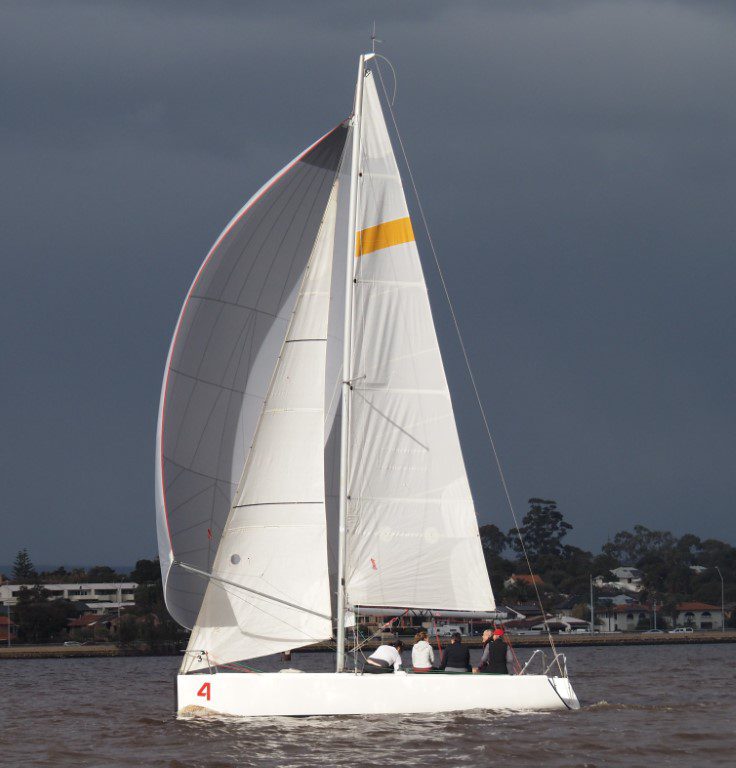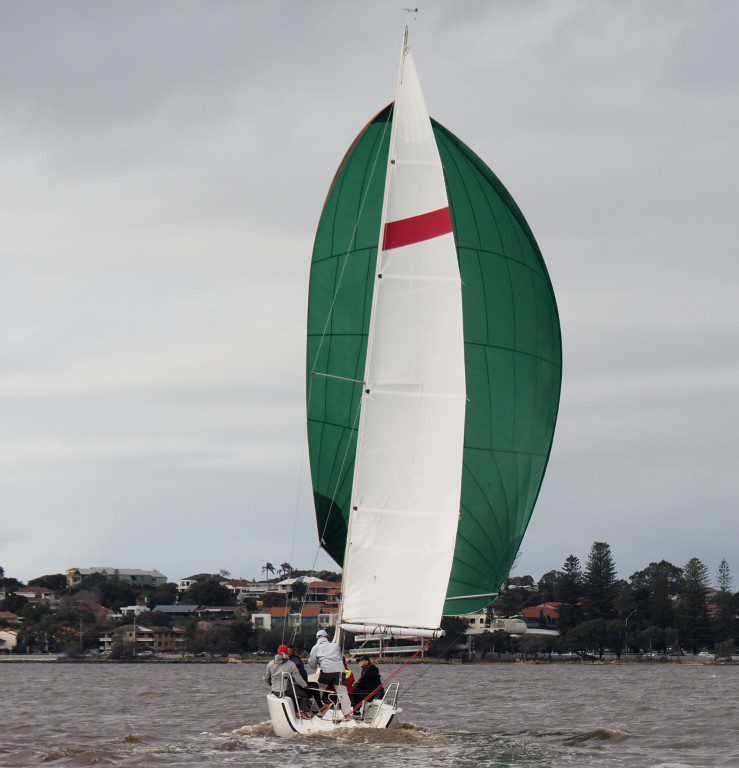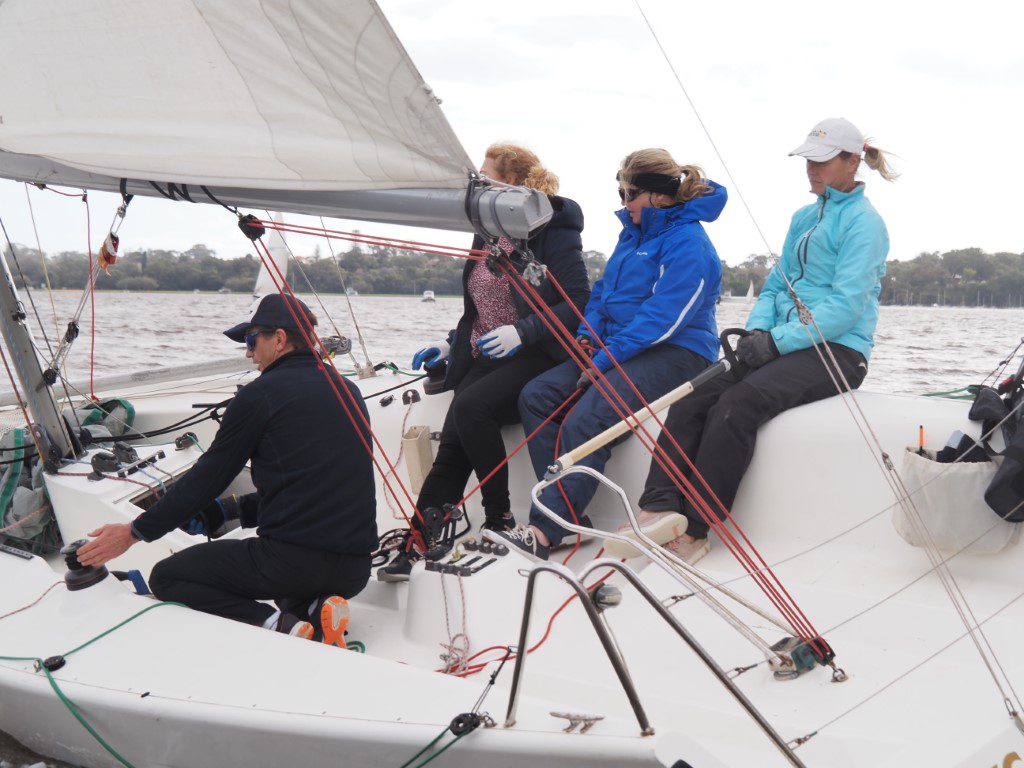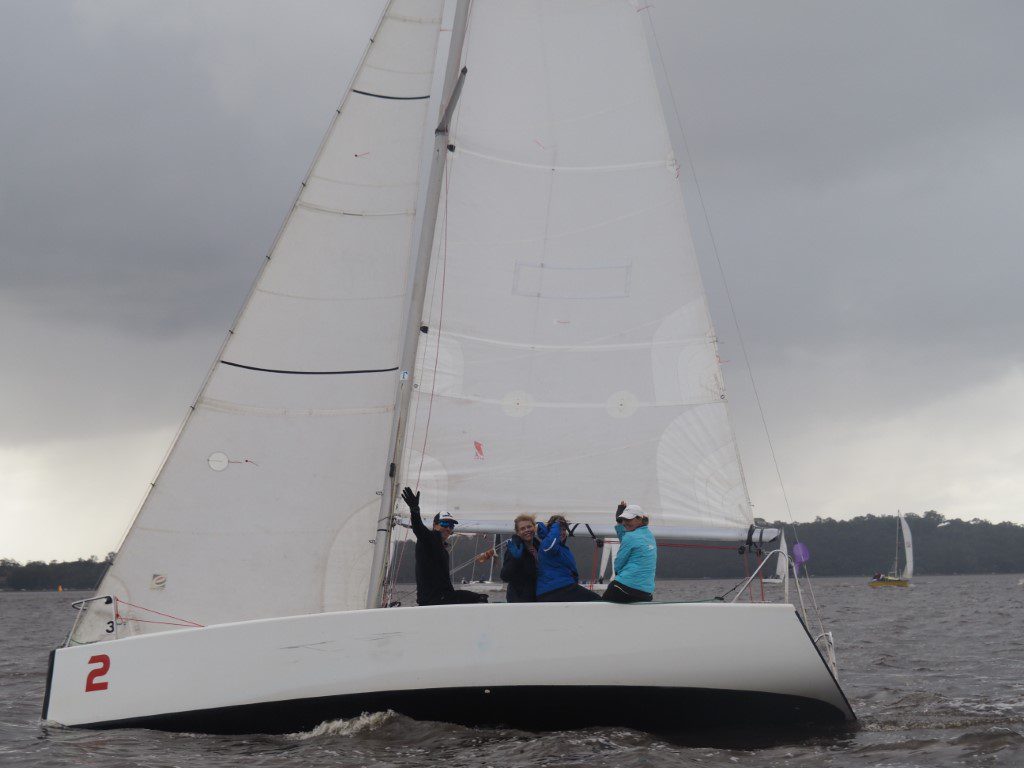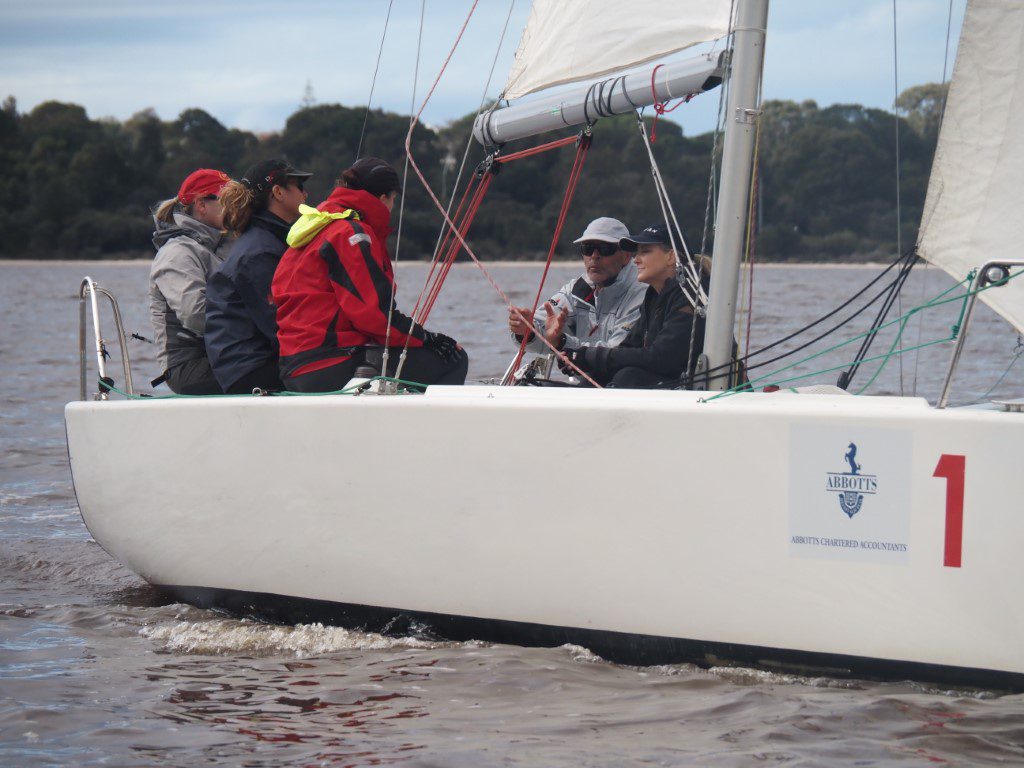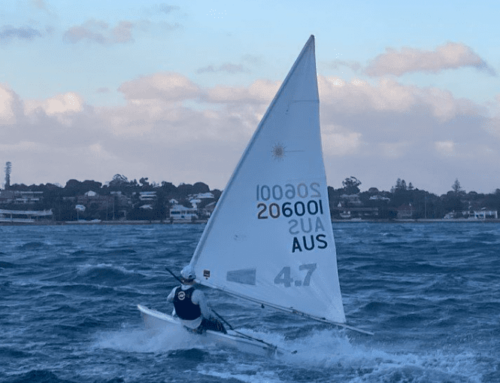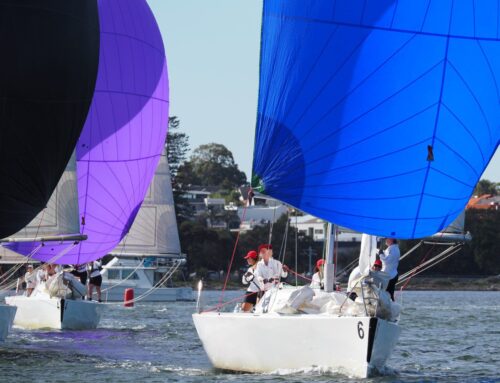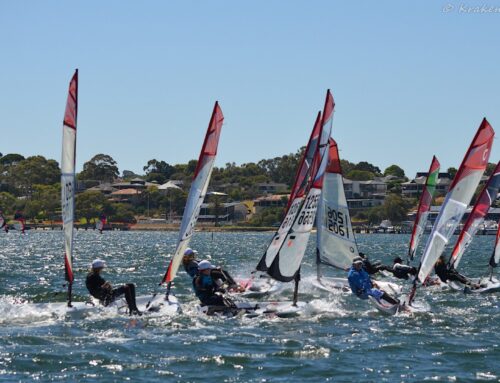Thank You
– This week’s True Sports Value is #Give Back and in the Club setting at SoPYC, the club would not function without the many people that lend a helping hand, go on committees and allow the on water and off water events to happen.
I’m very often impressed with how many people let me know they are available to help in any way. Thank you for keeping the “Club” part in South of Perth Yacht Club authentic.
Below is an example of Rear Commodore Stephen Grover and T&D Chairman Alan Sharpe – helping move the BW8’s in 30 knots to a safer location
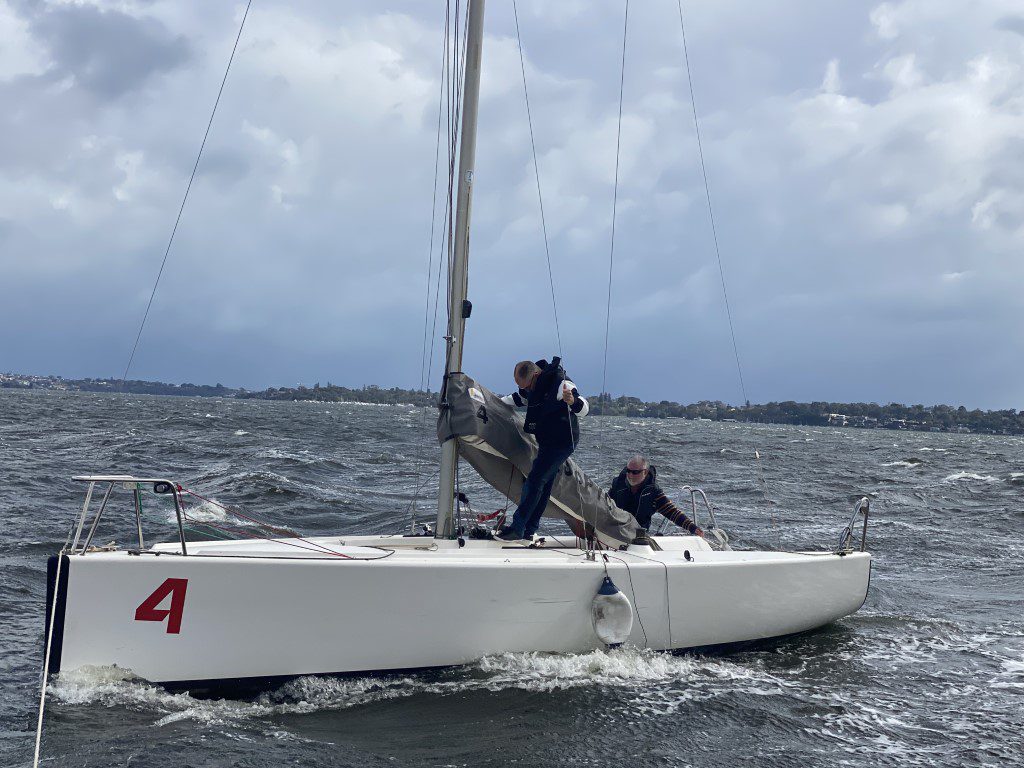
And again Alan Sharpe helping with the off-season repairs and maintenance, by sanding and varnishing 20 Opti Rudders and Center boards
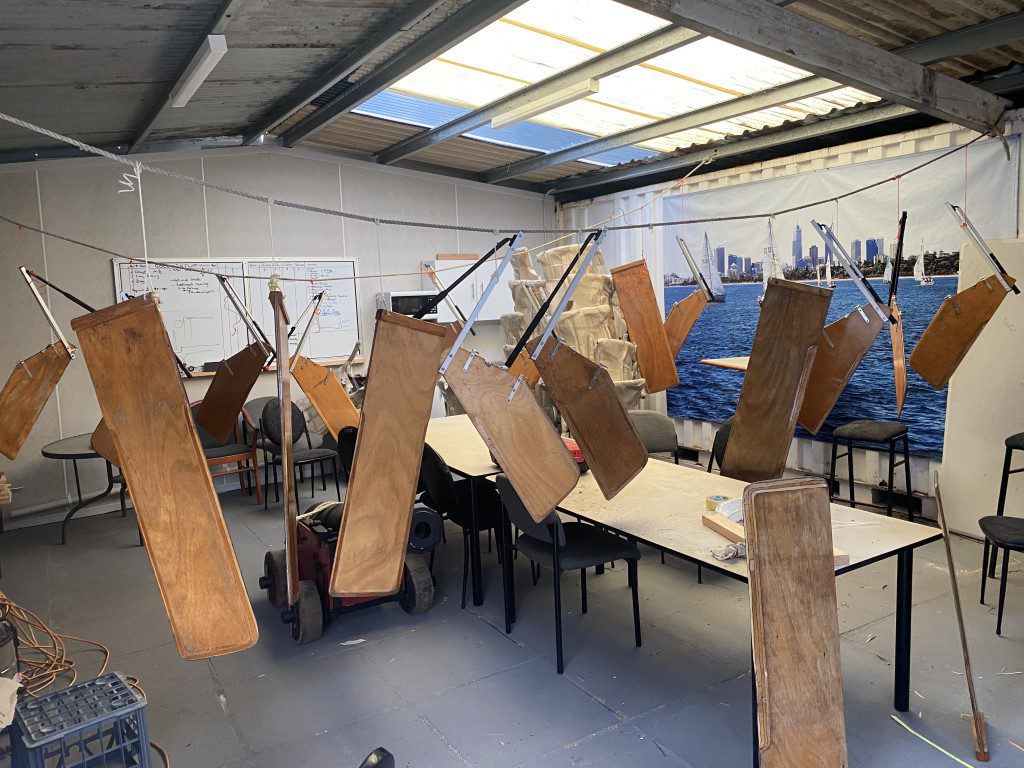
Women’s Keelboat Development
Again we had people giving back. Past Commodore Guy Skinner, plus one of the best bowmen in the world and professional sailor Don MacKracken, giving their time and expertise to help with the program.
Not to mention the more experienced sailors in the group nurturing the less experienced ones. I think the program is going well and we plan on tweaking the system to enhance some aspects in the coming weeks.
This week we focused on Spinnaker Hoists and below is a snapshot of the syllabus covering that section.
| Steps | Details |
| Spinnaker Sets | |
| Safety | |
| Know the Parts | Spinnaker Pole – Must always be contolled by 1) Holding 2) Topping Lift Watch out for sheets pulling on pole like a bow and arrow Halyard – Be carfull hoisting when Spinnaker sets (Halyard can burn through skin) Loose Sheets – Be farefull when the wind sets and sheets can flick around (Cover face) |
| How to Depower | Ease Vang Ease Sheet Ease Leeward Tweaker Ease Main Steering Up or Down Release/Dump/Fire Halyard – Keep sheets in to lay spinnaker flat on water |
| Preparation | |
| Before Start | Rigged and ready (run luffs – check for twists) |
| Before Top Mark | Check for twists (Run luffs); Check all sheets are clear |
| Rounding | Keep weight on rail and speed up. |
| Turning | Keep weight on rail and speed up. |
| Sneaking | If safe start sneaking halyard or sheets and visualise the set. “Zone” focus on tasks |
| Hoisting | Spinnaker should set (Pop) when the head hits the mast at the completion of the hoist |
| Pole | Either before the rounding – Slow but buys time At the same time as hoist – Fast but needs good co-ordination Ater Hoist – Simple but attaching pole to mast can be difficult with pressure and variable steering. Topping lift on one side (always) OR in the middle of jib sheets is a critical choice |
| Halyard | Pulling fast avoids catching air – Explosive power Feed clear of hull, jib, spreaders, attach the bag to the boat |
| Sheets | Balance – spreading spinnaker corners to catch the wind and allowing the hoist to go up quickly without setting |
| Steering | The balance between fleet and gust positioning and keeping the boat under the spinnaker. – Helm must watch the spinnaker and steer to project it away from the rig |
| Jib Trim | Jib Down – Ideally just before the spinnaker pops Leaving Jib Up – Must sail higher, Safer for not wrapping spinnaker around forestay Jib Down – Lets wind flow to spinnaker; allows the boat to sail lower; risk to wrapping around forestay. |
| Main Trim | Mainsail Eased – Make sure sheet is run and checked for knots Vang controlls twist; Contolls roll of boat Maintain flow across sail, not just pushing |
| Types of Sets | Bear Away, Gybe, Tight, Square, VMG |
| Trimming | Keep luff rolling; If roll is too high, bring pole down; If roll is low, raise pole Check clew and tack height (Generally level) – Controlled by tweakers, pole height and trim |

